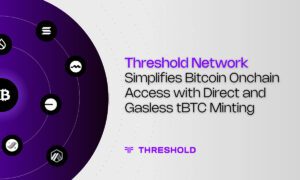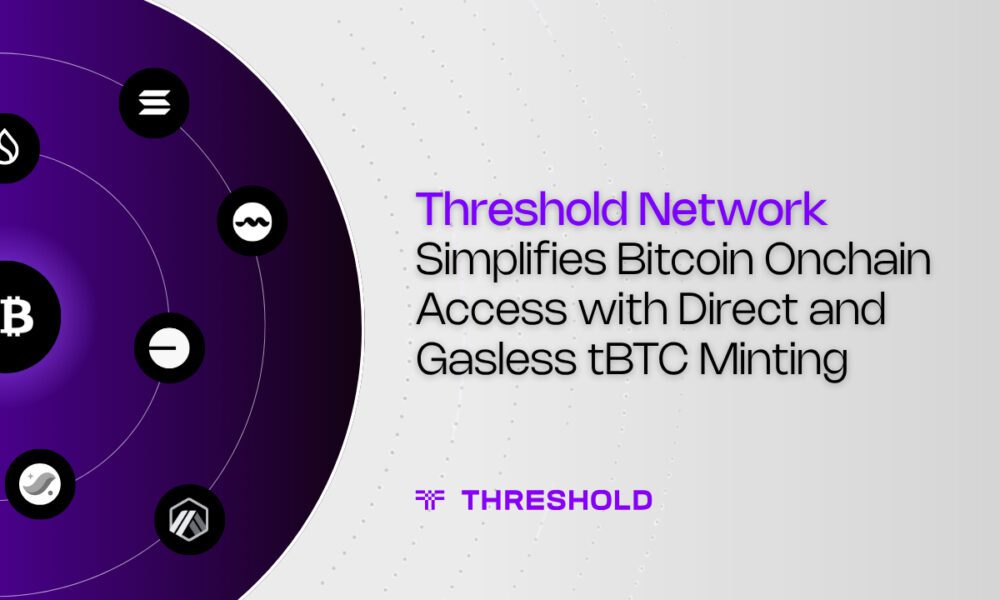Bitcoin mining is the process by which new bitcoins are created and transactions are verified on the Bitcoin network. Miners use specialized computer hardware to solve complex mathematical problems that secure the blockchain and process payments.
Bitcoin mining involves computers competing to solve cryptographic puzzles, with the first to find the correct answer earning newly minted bitcoins as a reward. This process happens approximately every 10 minutes and requires significant computational power. The mathematical problems become more difficult as more miners join the network.
The mining process serves two critical functions for Bitcoin’s operation. It validates transactions to prevent fraud and double-spending while simultaneously releasing new bitcoins into circulation. Without miners, the Bitcoin network would cease to function as a decentralized digital currency.
Key Takeaways
- Bitcoin mining creates new bitcoins while securing the network through cryptographic puzzle-solving
- Miners compete using specialized hardware to process transactions and earn bitcoin rewards
- The process maintains Bitcoin’s security and prevents fraudulent transactions across the network
What Is Bitcoin Mining?
Bitcoin mining serves as the computational backbone that validates transactions and creates new bitcoins through solving complex mathematical puzzles. This process secures the entire Bitcoin network while distributing digital currency to miners as rewards.
Definition and Purpose
Bitcoin mining involves computers competing to solve cryptographic hash puzzles that validate blocks of transactions. Miners use specialized hardware to perform billions of calculations per second, searching for a specific numerical solution called a nonce.
When a miner finds the correct solution, they broadcast it to the network for verification. Other miners confirm the solution’s validity within seconds. The successful miner receives newly created bitcoins plus transaction fees from that block.
Key mining functions include:
- Validating pending Bitcoin transactions
- Adding confirmed transactions to the blockchain
- Releasing new bitcoins into circulation
- Securing the network against fraudulent activity
The difficulty of these puzzles adjusts every 2,016 blocks to maintain a consistent 10-minute block creation time. This automatic adjustment ensures steady bitcoin production regardless of total mining power.
Role in the Bitcoin Network
Mining creates an immutable ledger by linking each new block to the previous one through cryptographic hashes. This chain structure prevents anyone from altering past transactions without redoing all subsequent work.
The network operates on a consensus mechanism called Proof of Work. Miners must expend real computational energy to participate, making attacks expensive and impractical.
Mining provides network security through:
- Distributed validation across thousands of miners
- Economic incentives for honest behavior
- Computational barriers against malicious actors
Miners also prioritize transactions based on fees, creating a market for block space. Higher-fee transactions typically get confirmed faster during periods of network congestion.
History and Evolution
Bitcoin mining began in 2009 with CPU processors on regular computers. Early miners could successfully mine blocks using basic desktop hardware with minimal electricity costs.
GPU mining emerged in 2010, offering significantly higher hash rates than CPUs. This shift marked the beginning of mining’s evolution toward specialized equipment.
ASIC miners appeared in 2013, delivering unprecedented efficiency specifically designed for Bitcoin’s SHA-256 algorithm. These machines rendered previous hardware obsolete practically overnight.
Mining evolution timeline:
- 2009-2010: CPU mining dominance
- 2010-2012: GPU mining era
- 2013-present: ASIC specialization
Today’s mining operations require substantial capital investment and cheap electricity to remain profitable. Industrial-scale mining farms now dominate the landscape, though smaller miners continue participating through mining pools that combine computational resources.
How Bitcoin Mining Works
Bitcoin mining operates through a computational process where miners compete to solve complex mathematical puzzles to validate transactions and create new blocks. Miners receive Bitcoin rewards for successfully adding blocks to the blockchain.
Proof of Work Explained
Proof of Work is the consensus mechanism that secures the Bitcoin network. Miners must expend computational energy to solve cryptographic puzzles before they can add new blocks to the blockchain.
The system requires miners to find a specific hash value that meets the network’s difficulty requirements. Each hash attempt involves combining transaction data with a random number called a nonce.
Key Components:
- Hash Function: SHA-256 algorithm processes block data
- Target Difficulty: Network adjusts every 2,016 blocks
- Nonce: Random number miners modify to find valid hash
The difficulty automatically increases or decreases to maintain an average block time of 10 minutes. When more miners join the network, competition intensifies and difficulty rises.
This energy-intensive process prevents malicious actors from easily manipulating the blockchain. An attacker would need to control more than 50% of the network’s total computing power.
The Mining Process Step by Step
Mining begins when miners collect unconfirmed transactions from the network’s mempool. They verify each transaction’s digital signatures and check that senders have sufficient Bitcoin balances.
Miners then organize valid transactions into a candidate block. The block header contains the previous block’s hash, a timestamp, and the Merkle root of all transactions.
Mining Steps:
- Collect and verify transactions
- Create block header with metadata
- Set initial nonce value to zero
- Calculate SHA-256 hash of block header
- Check if hash meets difficulty target
- If unsuccessful, increment nonce and repeat
The process continues until a miner finds a hash that begins with the required number of zeros. This typically requires billions or trillions of attempts.
Once a valid hash is found, the miner broadcasts the new block to the network. Other nodes verify the block and add it to their copy of the blockchain.
Mining Rewards and Block Creation
Successfully mining a block generates two types of rewards for the miner. The block reward consists of newly created Bitcoin, while transaction fees come from users who paid to have their transactions included.
The block reward started at 50 Bitcoin in 2009 and halves approximately every four years. As of 2024, miners receive 3.125 Bitcoin per block after the most recent halving event.
Current Reward Structure:
- Block subsidy: 3.125 BTC
- Transaction fees: Variable (0.1-2 BTC typical)
- Block time: ~10 minutes
- Next halving: ~2028
Transaction fees fluctuate based on network congestion and user demand. During busy periods, users pay higher fees to prioritize their transactions.
The total Bitcoin supply is capped at 21 million coins. Block rewards will continue halving until approximately 2140, when only transaction fees will compensate miners.
Mining Hardware and Software
Bitcoin mining requires specialized hardware and software to solve complex mathematical problems and earn cryptocurrency rewards. Miners must choose between different equipment types and configure appropriate software to participate in the mining process.
Types of Mining Equipment
ASIC miners dominate modern Bitcoin mining operations. These Application-Specific Integrated Circuits are purpose-built machines that offer the highest hash rates and energy efficiency.
Popular ASIC models include the Antminer S19 Pro, which produces 110 TH/s, and the WhatsMiner M30S++ at 112 TH/s. These machines cost between $2,000 to $8,000 depending on specifications.
GPU mining is no longer profitable for Bitcoin due to increased difficulty. Graphics cards consume more electricity while producing lower hash rates compared to ASICs.
CPU mining became obsolete years ago. Standard computer processors cannot compete with specialized hardware and would operate at a significant loss.
Hash rate determines mining power. ASIC miners measure performance in terahashes per second (TH/s), while older equipment uses gigahashes (GH/s) or megahashes (MH/s).
Mining Software Options
Mining software connects hardware to the Bitcoin network and mining pools. CGMiner remains one of the most popular choices for ASIC and GPU setups.
BFGMiner offers advanced features like dynamic clocking and remote interface capabilities. It supports most ASIC devices and provides detailed monitoring tools.
EasyMiner provides a graphical interface for beginners. This software simplifies the setup process but offers fewer customization options than command-line alternatives.
NiceHash allows users to sell their hash power to buyers. The platform automatically switches between different algorithms to maximize profitability.
Most miners join mining pools rather than solo mining. Pools combine computational power from multiple miners and distribute rewards based on contributed hash rate.
Setting Up a Mining Operation
Location planning requires adequate electrical infrastructure and cooling systems. Mining operations need 220V outlets and sufficient amperage to handle multiple ASIC units.
Ventilation systems prevent overheating in mining facilities. Each ASIC miner generates significant heat and requires proper airflow to maintain optimal performance.
Internet connectivity needs stable broadband connections. Mining operations require minimal bandwidth but need consistent uptime to avoid missed opportunities.
Power costs directly impact profitability. Miners seek locations with electricity rates below $0.10 per kWh to maintain competitive operations.
Initial setup involves connecting ASICs to power sources, ethernet cables, and configuring mining software with pool credentials and wallet addresses.
Mining Difficulty and Network Security
Bitcoin’s mining difficulty automatically adjusts every 2,016 blocks to maintain consistent block production times. The network’s hash rate directly correlates with its security level and resistance to attacks.
Difficulty Adjustment Mechanism
Bitcoin’s difficulty adjustment occurs approximately every two weeks when 2,016 blocks are mined. The protocol compares the actual time taken to mine these blocks against the target time of 14 days.
If blocks were mined faster than the 10-minute target, the difficulty increases. When blocks take longer than expected, the difficulty decreases proportionally.
The adjustment uses this formula: New Difficulty = Old Difficulty × (14 days / Actual Time)
For example, if 2,016 blocks took 12 days instead of 14, the difficulty would increase by approximately 16.7%. This mechanism ensures stable block production regardless of mining power fluctuations.
The maximum adjustment per period is limited to 300% increase or 75% decrease. This prevents extreme volatility in mining requirements.
Network Hash Rate
Hash rate measures the total computational power securing the Bitcoin network. It represents the number of hash calculations performed per second across all mining operations globally.
Higher hash rates indicate stronger network security. More computational power makes it exponentially more difficult and expensive for attackers to manipulate the blockchain.
Current Bitcoin hash rate fluctuates between 300-500 exahashes per second. This represents approximately 500 quintillion calculations happening every second across the network.
Key hash rate metrics:
- Terahash (TH/s): 1 trillion hashes per second
- Petahash (PH/s): 1,000 terahashes per second
- Exahash (EH/s): 1,000 petahashes per second
Mining pool distribution affects decentralization. When hash rate concentrates in few pools, it creates potential security risks for the network.
Protection Against Double Spending
Mining difficulty creates economic barriers against double spending attacks. Attackers would need to control over 50% of the network’s hash rate to consistently reorganize the blockchain.
The cost of acquiring majority hash rate typically exceeds potential profits from double spending. Current network security requires hundreds of millions of dollars in mining equipment and electricity.
Attack cost factors:
- Mining hardware acquisition
- Electricity consumption
- Opportunity cost of legitimate mining rewards
Confirmation depth increases security exponentially. Each additional block confirmation makes reversing transactions significantly more expensive and computationally intensive.
Six confirmations are generally considered secure for large transactions. This represents approximately one hour of additional mining work that attackers would need to redo.
Environmental and Economic Impact
Bitcoin mining consumes approximately 150 TWh of electricity annually, comparable to entire countries like Argentina. Miners face fluctuating costs from energy prices, hardware investments, and network difficulty adjustments that directly affect profitability.
Energy Consumption
Bitcoin’s proof-of-work mechanism requires miners to solve complex mathematical problems using specialized ASIC hardware. This process consumes enormous amounts of electricity as millions of mining devices operate continuously worldwide.
The network’s total energy consumption reached 150-200 TWh annually as of 2025. This equals the electricity usage of medium-sized countries like Argentina or the Netherlands.
Individual mining operations can consume 20-50 MW of power, equivalent to powering 15,000-40,000 homes. Large mining facilities often locate near power plants or renewable energy sources to reduce costs.
Energy intensity varies by mining hardware efficiency. Modern ASIC miners achieve 20-30 J/TH (joules per terahash), while older equipment consumes 100+ J/TH for the same computational output.
Profitability Factors
Mining profitability depends on four primary variables: electricity costs, hardware efficiency, Bitcoin price, and network difficulty. Electricity typically represents 60-80% of operational expenses.
Break-even electricity costs for efficient mining operations range from $0.03-0.06 per kWh. Miners paying above $0.08 per kWh often struggle to maintain profitability during market downturns.
Hardware costs create significant upfront investments. High-end ASIC miners cost $3,000-8,000 each and require replacement every 2-3 years as newer, more efficient models emerge.
Network difficulty adjusts every 2,016 blocks (approximately 14 days) based on total mining power. Higher difficulty reduces individual miner rewards, forcing less efficient operations offline.
| Cost Factor | Percentage of Total Costs |
| Electricity | 60-80% |
| Hardware | 15-25% |
| Facility/Cooling | 5-10% |
| Maintenance | 3-5% |
Sustainability Solutions
Mining companies increasingly adopt renewable energy sources to reduce environmental impact and operational costs. Hydroelectric power provides the cheapest and most reliable option for large-scale operations.
Solar and wind energy installations power mining facilities in Texas, Kazakhstan, and other regions with abundant renewable resources. These projects often include battery storage systems to maintain operations during low generation periods.
Some miners utilize excess natural gas from oil drilling operations, converting waste flares into electricity. This approach reduces methane emissions while generating power for mining operations.
Carbon offset programs allow mining companies to purchase credits equivalent to their emissions. However, critics argue that direct emission reductions provide more meaningful environmental benefits than offset purchases.
Heat recovery systems capture waste heat from mining equipment for building heating or agricultural applications. These installations can achieve 60-80% energy efficiency improvements compared to traditional mining setups.

































